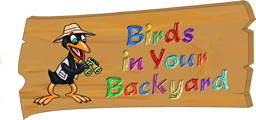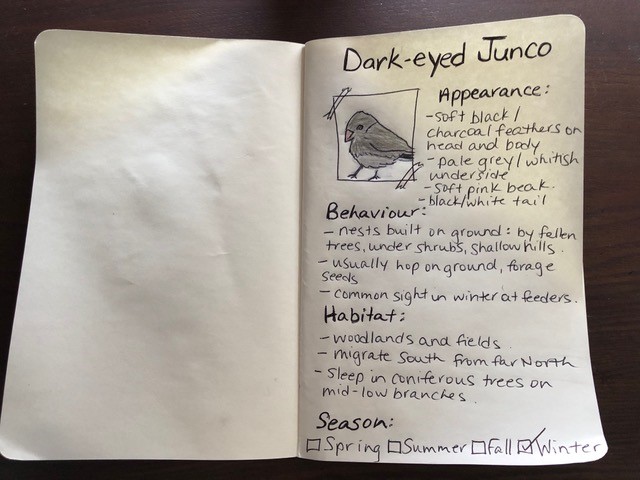Hello! Welcome back to the blog! I hope you have been having lots of fun exploring your
backyard, walking some local trails and keeping an eye out for the birds around us as we make
our way through the winter months. Maybe you put up a suet feeder or have been trying to
spot nests in the trees’ bare branches. I would love for you to share your adventures in birding
with me! Snap a picture of your outdoor adventures with birds or write about your experiences
to join the fun as we learn as much as we can about our neighbours in nature. It’s fun to
collaborate with a community of people who are interested in the same things, in this case
birds!
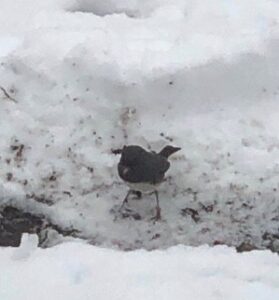
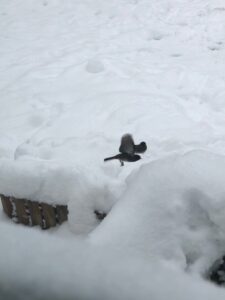
Today I am excited to share what I have observed about a special backyard bird who arrived at
my feeder as the snow began to fly. Sometimes called “snowbirds” for their winter debuts, the
Dark-eyed Junco is a feeder favourite of mine. They are just so cute! Their plumage isn’t the
most colourful but their distinctive markings make them a striking visitor. If a Dark-eyed Junco
visits your feeder, be sure to observe them as they fly away, with particular focus on their
bright white and black tail feathers. I am always amazed at the beautiful stripey tails as they flit
away from the feeder or take flight from collecting fallen seeds on the ground. Their bodies are
soft black and grey on top, and pale grey or white underneath. They look like a little smudge of
soot as they hop, hop, hop along the ground.
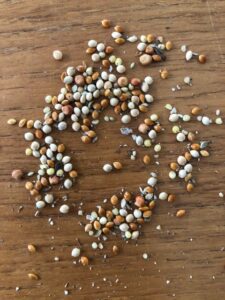
Dark-eyed Juncos are part of the sparrow family and they have some very interesting
behaviours. Preferring millet seeds (the small round red or golden seeds often in bird seed
mixes) to sunflower seeds, Juncos are common feeder visitors in the winter. In South-Western
Ontario, Juncos can be seen all year round, but are often most visible as their northern
counterparts migrate South in large numbers, increasing their visibility through a higher
population density. Although they migrate South, they are well adapted to cold weather as they
put on a downy winter coat and begin to appear round and fluffy as winter approaches.
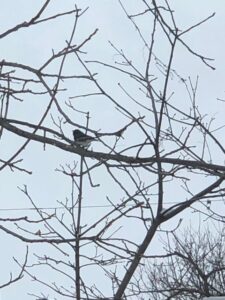
Thisproduction of down allows them to trap their body heat and protect from frigid temperatures.Dark-eyed Juncos are also interesting in their unique nesting habits. Although they are greatflyers, they prefer to spend time on the ground, usually hopping instead of walking, andbuilding their nests very low to the ground, on a sloping covered ridge, under shrubs, or at thebase of a fallen tree.
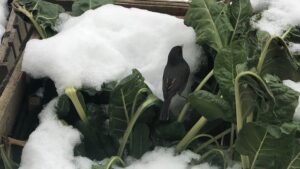
If a Junco makes its nest in a city or town, it might use the base of a
building or a low ledge to support its nest. Most of the food consumed by a Junco is found on
the ground. We could think of them as efficient recyclers as they eat up the seeds dropped by
birds who loosen them from a branch above. Nothing in nature goes to waste, and that means
that Juncos perform important work, cleaning up the spilt seed and contributing to the amazing
diversity of behaviours that allow for a multitude of species to thrive alongside one another.
You can encourage biodiversity in your own backyard by offering different foods and methods
of feeding which will attract different species. In the case of the Junco, try sprinkling some seed
on the ground! Maybe you could even start thinking about different plants, shrubs or trees you
could plant in your gardens this Spring to build an ecosystem for birds right outside your
window. Stay tuned for more on that!
For now, I am on a mission to identify a type of nest I have been seeing around on my walks. It
is so tiny, smaller than a baseball, and perfectly woven onto a slender tree branch. I can’t stop
thinking and wondering about the bird who could possibly lay its eggs there in the Spring. I
think I will do some research by consulting some books I have about birds and their nests and
make a map of where I have been seeing them, so that I can return in Spring with my binoculars
to see who lives there. Until next time…happy birding!
